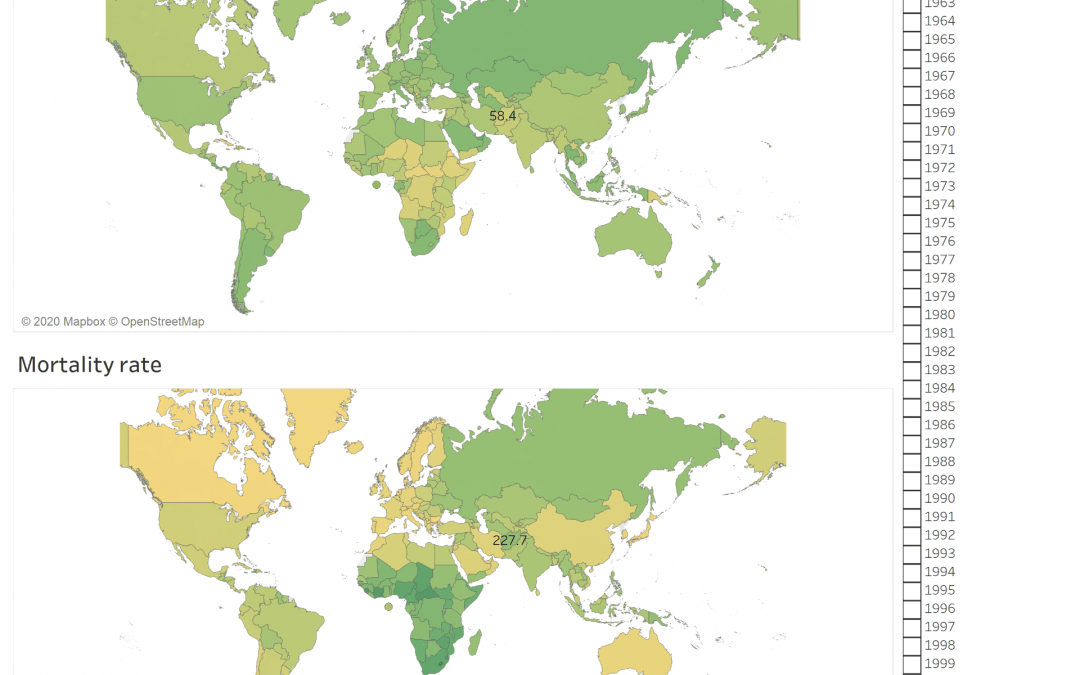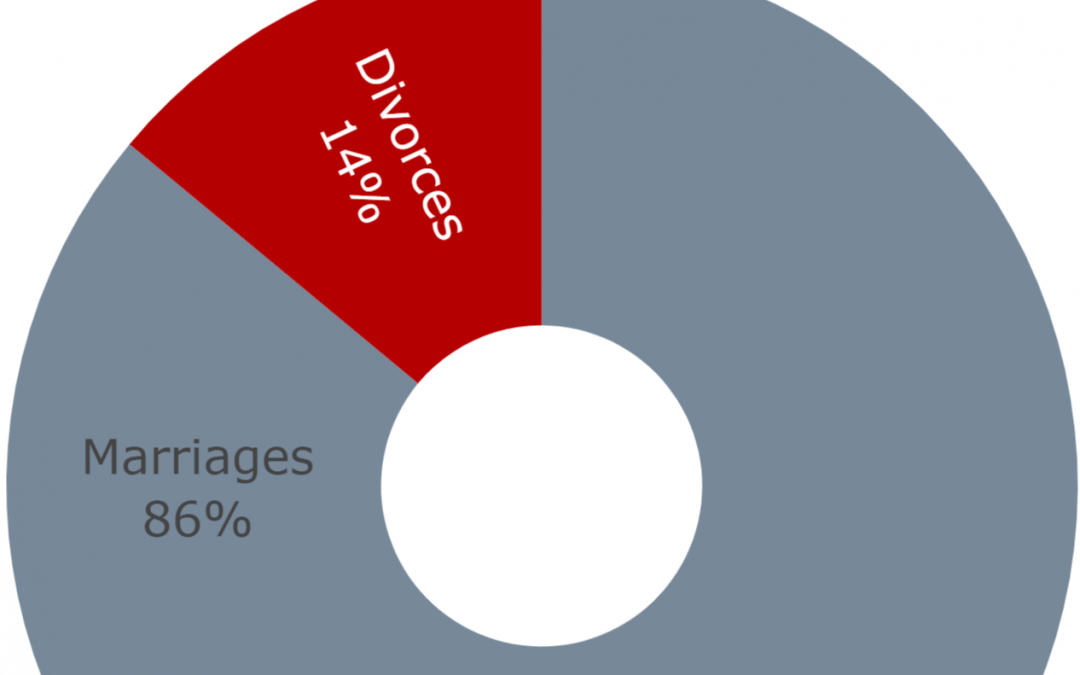
by Ghufran Haidar | May 5, 2020 | Dashboard, Visualization
The following dashboard gives a complete image of the vital statistics in Lebanon starting year 1999 till the year 2018. It can be seen that the number of births has increased over the past few years by approximately 74 percent (top visual). However, during the same period, the number of deaths has increased slightly. The drastic increase in the number of births and yet slight increase in death rate call for further analysis of factors contributing to this improvement such as economic indicators, health care system and other relevant factors. What is worth noting, however, is that the number of divorces have doubled during the same time period. In comparison, the number of marriages has slightly increased between the years 1999 – 2018.
The following dashboard further shows a break down of these four variables (births, deaths, marriages, and divorces) by city and year. Beirut, the capital of Lebanon, has maintained the lowest number of births throughout the years (1999 – 2018). Interestingly, however, North Lebanon has had the highest number of vitals across all four variables throughout the same time period. Bekaa, on the other hand, had a relatively high marriage and divorce rate.
On a separate note, Lebanon has maintained an equal number of births and deaths across both genders throughout the same period (1999 – 2018).
Note that the dashboard is highly interactive. To maximize your experience, please view in full-screen and use filters by year and city as well as highlight by city.

by Tarek El khayat | May 4, 2020 | Visualization
The Dashboard shows the mobile subscription rate around the world between 2013 till 2019 and compare it with the mortality rate. It is clear that the mortality rate is related to another factor and there is no contribution between the increase of mobile subscription and the mortality rate and the mobile is not the direct cause of mortality

by Layale Bassil | Apr 30, 2020 | Dashboard, Visualization
This dashboard contains several interactive visualizations about the “Vital Statistics in Lebanon” for the period 1999 till June 2019. The user can use the dashboard to get insights about the following Vital Stats: Births, Deaths, Marriages, and Divorce.
The user can select the desired measure and some provided filters like year-slider, Mohafaza, etc. in order to generate desired visuals!
Below is a list of available charts:
- Vital Statistics – Consolidated: this is a consolidated interactive chart. It gives the user the needed flexibility to select the x-axis and the y-axis from the four possible indicators (deaths, births, marriages, and divorce) and the gender (female, male) where applicable. By mousing over the points in the scatter plot on the left, the line graphs on the right update based on the point that you are hovering over.
- Yearly Vital Statistics Change (%) in Lebanon: the user can see the yearly percent change for the different measures (births, deaths, marriages, divorces) by gender and Mohafaza.
- Total Births/Deaths: an interactive bar chart to show the total number of births and deaths by gender and Mohafaza.
- Total Marriages/Divorces: an interactive stacked bar chart to show the total number of marriages and divorces by Mohafaza.
- Marriages/Divorces Progress: another interactive scatter plot that shows the progress on divorce with respect to marriages categorized by Mohafaza. The user has the option to select only one year or see the progress over all the years.
- Divorce Rate with respect to Marriage: this interactive bar chart shows the divorce rate (%) with respect to marriages by Mohafaza. The user has the option to select only one year or see the progress over all the years.
Moral of the Story: divorce rate in Lebanon on the rise (increased by 101% for the past 10 years)! So please protect your marriages!
Data source (Vital Data 1999-2019: Births, Deaths, Marriages, Divorces): Open Data Lebanon.


